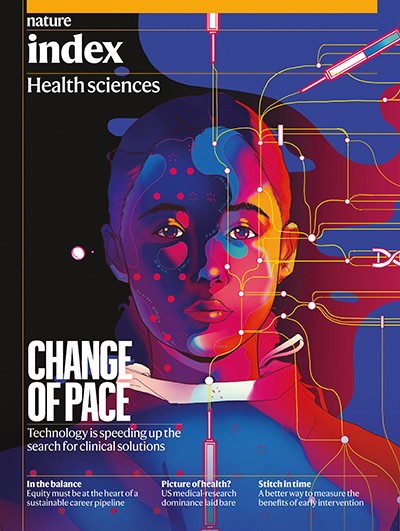[ad_1]
The Nature Index is a database of author affiliations and institutional relationships. The index tracks contributions to research articles published in high-quality natural-science and health-science journals, chosen based on reputation by an independent group of researchers.
The Nature Index provides absolute and fractional counts of article publication at the institutional and national level and, as such, is an indicator of global high-quality research output and collaboration. Data in the Nature Index are updated regularly, with the most recent 12 months made available under a Creative Commons licence at natureindex.com. The database is compiled by Nature Portfolio.
Nature Index metrics
The Nature Index uses Count and Share to track research output. A country/territory or an institution is given a Count of 1 for each article that has at least one author from that country/territory or institution. This is the case regardless of the number of authors an article has, and it means that the same article can contribute to the Count of multiple countries/territories or institutions.
Nature Index 2024 Health sciences
To glean a country’s, territory’s, region’s or an institution’s contribution to an article, and to ensure that they are not counted more than once, the Nature Index uses Share, a fractional count that takes into account the share of authorship on each article. The total Share available per article is 1, which is shared among all authors under the assumption that each contributed equally. For instance, an article with 10 authors means that each author receives a Share of 0.1. For authors who are affiliated with more than one institution, the author’s Share is split equally between each institution. The total Share for an institution is calculated by summing the Share for individual affiliated authors. The process is similar for countries/territories, although complicated by the fact that some institutions have overseas labs that will be counted towards host country/territory totals.
Adjusted Share accounts for the small annual variation in the total number of articles in the Nature Index journals. It is arrived at by calculating the percentage difference in the total number of articles in the Index in a given year relative to the number of articles in a base year and adjusting Share values to the base year levels.
The bilateral collaboration score (CS) between two institutions A+B is the sum of each of their Shares on the papers to which both have contributed. A bilateral collaboration can be between any two institutions or countries/territories co-authoring at least one article in the journals tracked by the Nature Index.
NATUREINDEX.COM
natureindex.com users can search for specific institutions or countries and generate their own reports, ordered by Count or Share.
Each query will return a profile page that lists the country or institution’s recent outputs, from which it is possible to drill down for more information. Articles can be displayed by journal, and then by article. Research outputs are organized by subject area. The pages list the institution or country’s/territory’s top collaborators, as well as its relationship with other organizations. Users can track an institution’s performance over time, create their own indexes and export table data.
This supplement
The Nature Index 2024 Health sciences supplement is based on the Nature Index database. It includes Nature Index articles in 65 health-science journals as well as health-sciences articles in five multidisciplinary journals published between January 2022 and July 2023.
The list of health-science journals was determined by a panel of independent clinical researchers and informed by a global survey of the wider research community. The same method was used for the original list when Nature Index launched in 2014 and for when the journal list was last reviewed in 2018.
The tables in this supplement show the leading institutions and countries overall, ranked by their article Share (Share) in health sciences between January 2022 and July 2023, as well as the leading institutions in each sector based on the same metric. The leading institutional collaborations based on bilateral collaboration score (CS) are also included.
[ad_2]
Source Article Link


